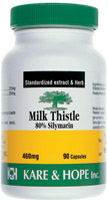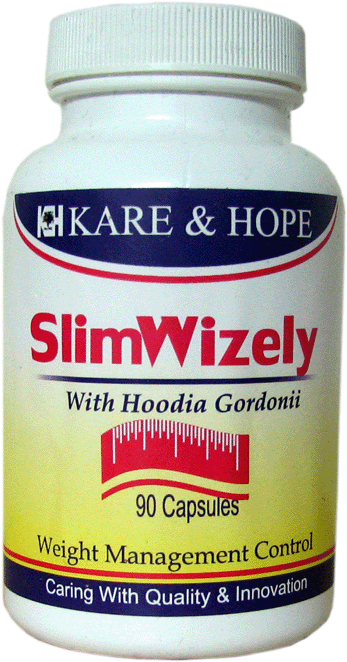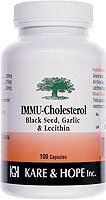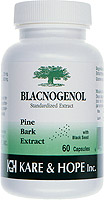|
Authors: Ronald M. Lawrence, M.D., Ph. D.Daniel
Sanchez, D.C., C.C.S.P. Mark Grosman, D.C.
Shortcuts:
ABSTRACT
INTRODUCTION
METHODS
RESULTS
CONCLUSIONS AND DISCUSSION
SUMMARY
ABSTRACT
Twenty-four subjects (both male and female) were seen in
a clinical office setting. The subjects suffered from acute
injuries (under 30 days) sustained during the course of
athletic endeavour. The patient's were selected on a random
basis to receive either a placebo or Lignisul MSM (methylsulfonylmethane)
in addition to routine chiropractic manipulation, ultrasound
and muscle stimulation at each visit. All patients were
treated with similar therapy and all patients received
unmarked capsules of either a placebo or Lignisul MSM.
Patients were discharged from care once all their symptoms
were resolved. Of the twelve patients who received placebo
four of the twelve graded their results as excellent or
good, while of the twelve patients on Lignisul MSM seven of
the twelve graded their symptom reduction as excellent or
good. This represented a 58.3% of symptom reduction on
Lignisul MSM, versus 33.3% on placebo. Of greater
significance, however, was the fact that patients on
Lignisul MSM had 3.25 visits on an average, while those on
placebo had 5.25 visits. This means that patients on
Lignisul MSM had 40% fewer visits to the office before
reaching a recovery phase. This represents sizable economic
advantage.
This paper discusses the chemical nature of MSM, the
possible mechanisms involved in treatment of such sports
injuries and the implications for future usage of this
phytonutrient for the treatment of short term athletic
injuries.
Return to article menu
INTRODUCTION
Methylsulfonylmethane (MSM) was first discovered in the late
1970's by researchers at Oregon Health Sciences University
in Portland. It is a metabolite of DMSO (Dimethyl sulfoxide).
By 1965, more than one thousand five hundred studies had
been conducted on DMSO involving about one hundred thousand
patients. DMSO is used for a host of problems, primarily
musculoskeletal inflammatory conditions. However, by 1978,
the FDA approved DMSO only as a prescriptive treatment for
interstitial cystitis. When DMSO enters the body,
approximately 15% of it is converted to MSM, its major
breakdown component. MSM is in reality DMS0 2 (dimethyl
sulfone). MSM has had widespread use since the late 1970's
in veterinary medicine where it has been used to treat
inflammatory conditions, including muscle and bone
disorders. (1, 2, 3, 4, 5).
In 1998, one of the authors of this paper, Ronald M.
Lawrence, performed a double- blind study using patients
with degenerative arthritis. This study showed an 82%
decrease in symptomatology after six weeks of usage on a
three-times-a-day dosage. (6) It has been postulated that
MSM takes anywhere from three to six weeks to produce
significant changes in regard to the treatment of arthritic
disorders, but to date there has been no study that has
evaluated it for acute short-term injuries.
R. D. Moore and J. I. Morton studied the effect of MSM in
inflammatory joint disease in MRL/1pr mice. (7) In addition,
R.D. Moore and Morton studied the effect of 3% water
solutions of dimethyl sulfone (DMSO 2) in P1w mice and found
a diminishment in death due to lupus nephritis.(9) B. V.
Siegel and J. Morton studied the effects of dimethyl sulfone
on murine autoimmune lymphoproliferative disease and
explained the benefits of this compound. (9) Since one-third
of the DMSO 2 molecule is composed of sulfur, a relationship
to sulfur metabolism has been postulated. Several papers
have been written about sulfur and it's roles in such
disorders of the musculoskeletal type. (10,11) For this
reason, and because of the effective results noted in the
treatment of degenerative arthritis, this study was
undertaken to evaluate the potential effects of DMSO 2 (MSM)
in athletic injuries involving muscles, tendons, and
ligaments.
Return to article menu
METHODS
Twenty-four subjects were examined in a clinical practice
setting (the practice of Daniel Sanchez and Mark Grosman).
This practice deals with a large number of athletic injuries
on a daily basis. The first twenty-four subjects who came in
with complaints of acute injury were admitted into the study
and the subjects were divided in a random fashion into two
groups (A and B). The twelve subjects in group A received a
container labeled "A" which had a thirty-day supply of
capsules, while the twelve in group B received a contained
labeled "B". The doctors and patients involved were not
privy as to whether they received placebo or actual Lignisul
MSM. The code, which defined whether bottle A or bottle B
contained placebo or active substance, was no broken until
after the completion of the study.
Nine of the twelve patients taking bottle A had diagnoses of
sprain/strain injuries, one had an acute episode of
bilateral chondromalacia patellae, one patient had a right
lateral epicondylitis (right elbow), and one patient had a
radicular syndrome (bilaterally) in addition to a lumbar
strain syndrome. In the group taking bottle B, ten subjects
had a sprain/strain diagnoses, while one subject had a
radiculopathy involving the left lower extremity along with
a lumbar sprain syndrome and one patient exhibited a lateral
epicondylitis involving the right elbow.
Each patient received chiropractic manipulation in a
standard fashion, ultrasound (five watts for ten minutes)
and muscle stimulation (applied in a standard fashion for
five minutes). Each subject took the material in either
bottle A of bottle B three times a day with meals. The only
differential between treatment given to each group was the
administration of either the placebo or the phytonutrient
Lignisul MSM.
All patients were examined in a similar fashion for angle of
motion of the part or parts involved and this was duly
recorded. Patients were also quizzed as to subjective
complaints at the time of each visit. In addition, palpatory
findings in regard to the musculature in the involved area
was recorded on the basis of zero to four plus, with zero
being the absence of any type of muscle spasm beyond that of
a normal resting state, while four-plus represented extreme
muscle spasm based on the rigidity of the muscle involved.
This information was recorded at each visit as well. In
those injuries involving the upper extremities a Jamar Hand
Dynamometer evaluation of grip strength was recorded at each
visit. In those exhibiting lower extremity or low back
injuries, straight-leg raising testing was performed at each
visit and the degrees of elevation from the horizontal were
noted and recorded.
Return to article menu
RESULTS
Those patients in the aliquot which consumed the Lignisul
MSM, on average, reported a faster reduction of
symptomatology than those on the placebo. Four of the
subjects taking the MSM reported the "Disappearance" of
symptoms after taking the capsules for a very short period
of time. (We shall discuss this below). Symptom resolution
and evaluation also consisted of the objective findings
noted by the examining doctors at each visit. Response of
the patients in regard to their symptoms were graded on a
scale of zero to ten with ten being the severest pain and
zero representing an absence of pain. This evaluation of the
symptom level of pain was performed at each of the visits.
Therefore the patients were evaluated objectively by the
doctor at each visit and there was a subjective evaluation
in regard to the patient's own perception level of pain.
Since we were dealing with very small study groups the
excellent and good categories were combined in arithmetic
fashion and the satisfactory category and poor category were
grouped together, again for purposes of statistical
evaluation in using this small group of subjects. Seven out
of twelve in the A category showed excellent to good results
(58.3%). Those in the B category showed four out of twelve
having excellent to good results (33.3%). In the
satisfactory to poor categories, the total for the A group
was five of twelve (41.66%) versus eight of twelve in the B
category (66.66%).
Since economic considerations are very important, we
determined the number of visits for each group. The number
of visits, on average, for group A was 3.25 versus group B
which was 5.25 visits. This represents a 40% reduction in
visits. The economic advantages of reduced number of office
visits was clearly noted with patients on Lignisul MSM. This
is also reflected in reduced disability time.
One patient in group A (who had an acute flare-up of
bilateral chondromalacia patellae) noted complete resolution
of her pain within two visits. Past episodes of this problem
had usually taken up to four visits to resolve and up to two
weeks to clear. This patient had resolution of her problem
in less than one week. One patient who had a diagnosis of
left ankle sprain/strain of a severe type noted a complete
resolution of her problems within three visits over a period
of one week, with a reduction of plus-four swelling of the
ankle joint, resolving within two days after beginning the
test substance ("A"). One patient in group A with a
diagnosis of moderate cervical strain with associated
radical syndrome of the right upper extremity noted complete
relief of her discomfort within one week. Another patient
with an episodic flare-up of lumbar ridiculer syndrome
involving the left lower extremity noted a 70% improvement
in five days (category A) where typical flare-ups in the
past required approximately ten to fourteen days to resolve.
One patient with left elbow medial collateral ligament
sprain (grade I) needed only two visits and five days of
taking bottle A to resolve her symptomatology. One patient
with a lumbar strain diagnosis eventually was diagnosed with
a herniated nucleus pulposus (ruptured disc) and substance A
did not produce a resolution of his symptomatology within
thirty days. A male, age sixteen, who fell while playing
softball and injured his right elbow (diagnosed with right
elbow strain, medial collateral ligament grade I strain)
noted a disappearance of symptoms within two days and the
examining doctor found full range of motion (which had been
impaired by 25%) after two days on bottle A. One patient
with lumbar sprain syndrome and associated pyriformis
syndrome went from severe to slight within two days after
starting bottle A.
Return to article menu
CONCLUSIONS AND
DISCUSSION
In this small study using Lignisul MSM versus a placebo
(both administered in a similar capsule form and both
capsules appearing exactly the same to the examiners and the
patients) it was discovered that those taking substance
Lignisul MSM had a level of significant recovery from
short-term injuries or flare-ups of previously induced
athletic injuries. From the economic point of view, we were
particularly gratified to see a marked reduction (40%) in
the number of visits usually required to treat these
injuries. It is postulated that MSM has an anti-inflammatory
action based upon increased blood flow to the injured part
(dilation of blood vessels and enhanced blood supply),
reduction in muscle spasm and change in cellular membrane
potentials involving sodium-potassium transfer. (12)
Since MSM, a phytonutrient, has been shown to have a very
low level of toxicity (comparable to water) and since the
substance has also been widely used in veterinary medicine
without showing any toxic results as well, the use of
Lignisul MSM to treat human sprains, strains and athletic
injuries appears to be very beneficial based on this small
but intensive study. A larger study involving several
hundred subjects is being planned and these subjects will be
taken from a sports medicine practice.
It is felt by the authors that Lignisul MSM, in view of it's
low toxicity, inexpensive costs, and ease of administration,
should be considered as an invaluable addition for treatment
of short-term athletic injuries of the type that were
involved in this study. It was previously shown in a double
blind study that Lignisul MSM had a high rate of effectively
in a chronic painful condition involving osteoarthritis, the
physiologic actions of MSM are apparently similar in
producing an alleviation of symptoms in both chronic and
acute conditions.
Return to article menu
SUMMARY
The present study demonstrated the effectiveness of a
natural substance Lignisul MSM on acute athletic injuries,
such as muscle sprains and strains, with a negligible level
of toxicity and, of even greater importance, a significant
reduction in visits necessary to the doctor's office or
treatment facility.
Return to article menu
BIBLIOGRAPHY
1. Jacob, S. W., E .E. Rosenbaum, and D. C. Wood.
Dimethyl Sulfate (Basic Concepts), New York; Marcel Dekker,
Inc. 1971.
2. Jacob, S. W., ed. Biological Actions of Dimethyl
Sulfoxide, Volume 243. New York New York Academy of
Sciences, 1975.
3. Jacob, S. W., R. J. Herschler, and H.
Schmellenkamp. The Use of DMSO in Medicine, Munich: Springer
Verlag, 1985.
4. Jacob, S.W., and J. G. Kappel. DMSO, Munich:
Springer Verlag, 1988.
5. Tarshis, Barry. DMSO ó The True Story of a
Remarkable Pain-Killing Drug. New York: Morrow, 1981.
6. Lawrence, R.M. "Methylsulfonylmethane (MSM): A
double-blind study of its use in Degenerative arthritis."
International Journal of Anti-Aging Medicine, Summer 1998, I
(I);50.
7. Moore, R.D., and J. I. Morton. "Dimished
inflammatory joint disease in MRL/1pr mice ingesting
dimethyl sulfoxide (DMSO) or methylsulfonylmethane (MSM)."
Federation of American Societies for Experimental Biology,
69th annual meeting. April 1985, p.692
8. Morton, Jane I., and R. D. Moore. "Lupus nephritis
and deaths are dimished in B/W mice drinking 3% water
solutions of dimethyl sulfoxide (DMSO) and dimethyl sulfone
(DMSO (2). "Journal of Leukocyte Biology, 1986, 40 (3);322.
9. Morton, Jane I. And Benjamin V. Siegel. "Effects
of oral dimethyl sulfoxide and dimethyl sulfone on murine
autoimmune lymphoproliferative disease." Proceedings of the
Society for Experimental Biology and Medicine, 1986,
183:227-30.
10. Moss, Jeffrey. "A perspective on sulfur ó Is it
the most ignored, misunderstood essential trace element."
The Moss Nutrition Report, August 1997, Hadley, M.A.
11. Osterberg, E. E., et al. "Absorption of sulfur
components during treatment by sulfur baths." Archives
Dermatol. Syphitol, 1929, 20:156-66 12. Jacob, Stanley, and
Robert Herschler. :Pharmacology of DMSO: Crybiology, 1986 |





